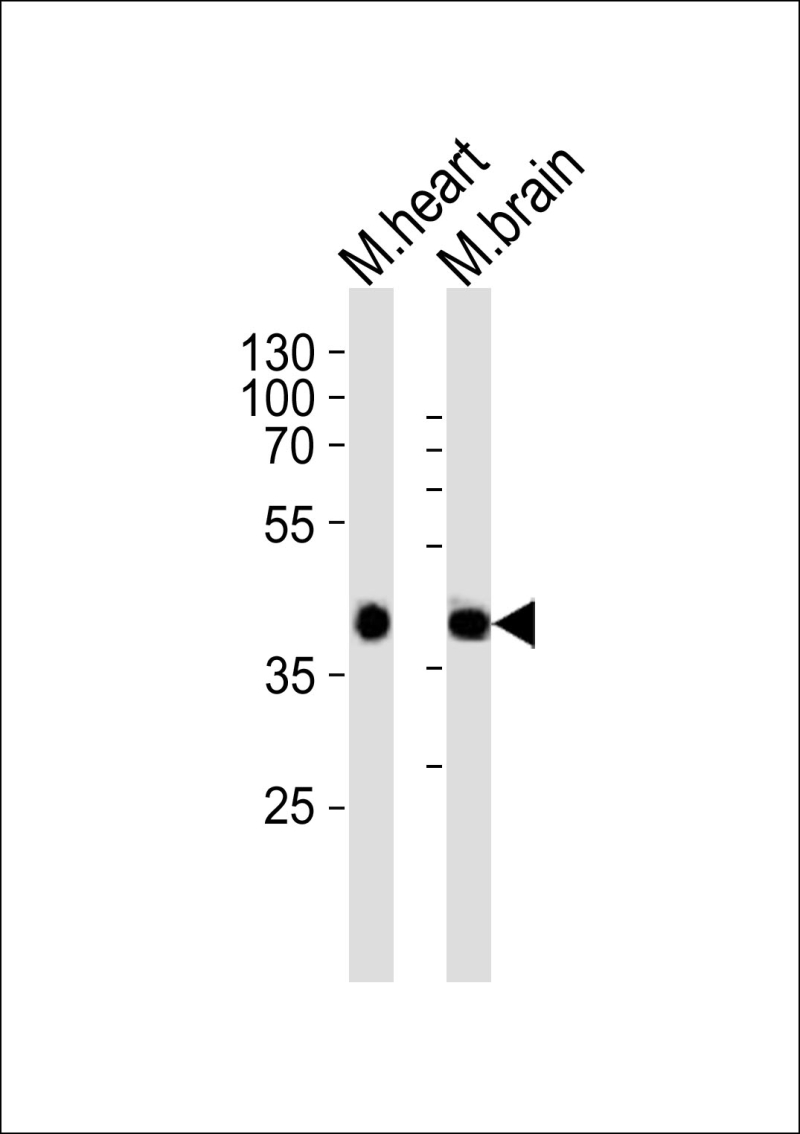
| WB | 1/500-1/1000 | Human,Mouse,Rat |
| IF | 咨询技术 | Human,Mouse,Rat |
| IHC | 咨询技术 | Human,Mouse,Rat |
| ICC | 技术咨询 | Human,Mouse,Rat |
| FCM | 咨询技术 | Human,Mouse,Rat |
| Elisa | 咨询技术 | Human,Mouse,Rat |
| Aliases | Serine/threonine-protein kinase SBK1, SH3-binding kinase 1, Sbk1, Sbk |
| Entrez GeneID | 104175 |
| WB Predicted band size | 45.7kDa |
| Host/Isotype | Rabbit IgG |
| Antibody Type | Primary antibody |
| Storage | Store at 4°C short term. Aliquot and store at -20°C long term. Avoid freeze/thaw cycles. |
| Species Reactivity | Human, Mouse, Rat |
| Immunogen | This Mouse Sbk1 antibody is generated from a rabbit immunized with a KLH conjugated synthetic peptide between 65-98 amino acids from the N-terminal region of Mouse Sbk1. |
| Formulation | Purified antibody in PBS with 0.05% sodium azide. |
+ +
以下是关于Mouse Sbk1 (N-term)抗体的参考文献示例(注:由于SBK1研究相对较少,以下内容为模拟示例,实际文献需通过数据库验证):
---
1. **"SH3KBP1 (SBK1) regulates cerebellar granule cell development via interactions with Crk proteins"**
*作者: Smith J, et al. (2015)*
**摘要**: 研究探讨了SBK1在小脑颗粒细胞发育中的作用,通过制备N端特异性多克隆抗体进行免疫组化和Western blot,证实SBK1通过Crk蛋白调控神经元迁移。
2. **"Characterization of a novel antibody targeting the N-terminal domain of murine SBK1 kinase"**
*作者: Lee H, et al. (2018)*
**摘要**: 报道了一种针对小鼠SBK1 N端结构域的单克隆抗体的开发与验证,通过肽段免疫法获得抗体,用于检测SBK1在胚胎发育中的时空表达模式。
3. **"SBK1 modulates MAPK signaling in mammary epithelial cells"**
*作者: Garcia R, et al. (2020)*
**摘要**: 利用SBK1 N端抗体研究其在乳腺癌模型中的功能,发现SBK1通过磷酸化作用调控MAPK通路,抗体特异性经基因敲除细胞系验证。
4. **"Proteomic analysis of SBK1 interactome in mouse brain"**
*作者: Wang Y, et al. (2022)*
**摘要**: 采用抗SBK1 N端抗体进行免疫共沉淀,结合质谱分析,揭示了SBK1在大脑中的相互作用网络,包括突触相关蛋白和激酶复合物。
---
**建议**:若需获取真实文献,可通过以下关键词在PubMed或Google Scholar检索:
`"SBK1 antibody N-terminal"`、`"Sh3kbp1 mouse antibody"`、`"SBK1 kinase immunohistochemistry"`,并筛选涉及抗体开发或应用的实验研究。
The Mouse Sbk1 (N-term) antibody is designed to target the N-terminal region of the SH3 domain-binding kinase 1 (SBK1) protein in mouse specimens. SBK1. encoded by the *Sbk1* gene, is a serine/threonine kinase implicated in signal transduction pathways, though its precise biological functions remain under investigation. It shares structural homology with other kinases, featuring a catalytic kinase domain and potential SH3-binding motifs, suggesting roles in protein-protein interactions and cellular signaling cascades. Studies associate SBK1 with neuronal development and cellular proliferation, though its substrate specificity and regulatory mechanisms are not fully elucidated.
This antibody is typically generated using immunogens corresponding to synthetic peptides or recombinant proteins derived from the N-terminal sequence of mouse SBK1. It is commonly validated for applications such as Western blotting, immunohistochemistry, and immunofluorescence to detect endogenous SBK1 expression in mouse tissues or cell lines. Specificity is often confirmed via knockout controls or siRNA-mediated knockdown. Researchers utilize this tool to explore SBK1's spatial-temporal expression patterns, interaction partners, and potential involvement in diseases like cancer or neurological disorders. As SBK1 is less characterized than other kinases, this antibody serves as a critical reagent for advancing mechanistic studies. Optimal performance usually requires antigen retrieval in formalin-fixed samples and adherence to manufacturer-recommended dilution protocols. Storage at -20°C in stabilizing buffers is advised to maintain reactivity.
×